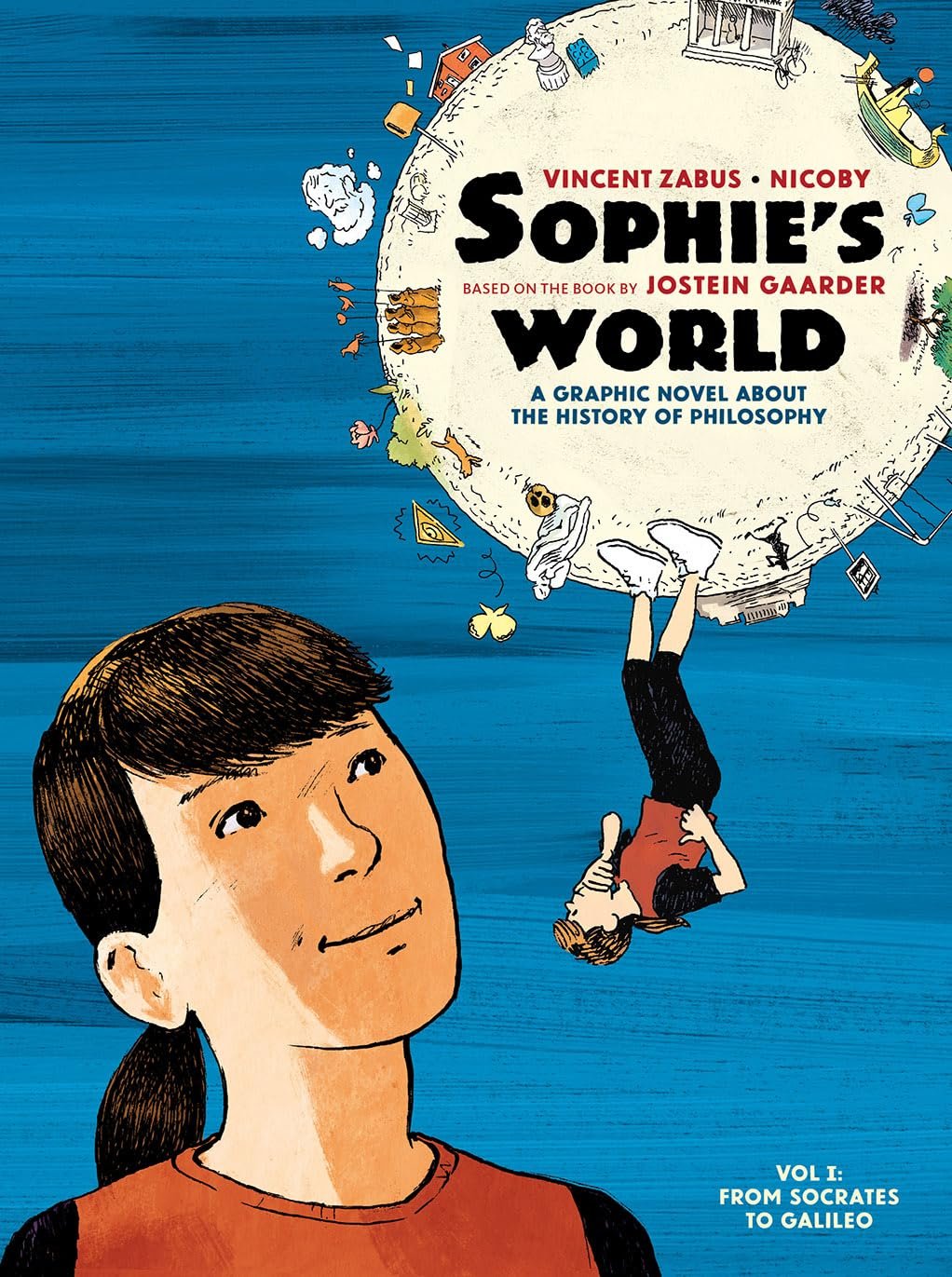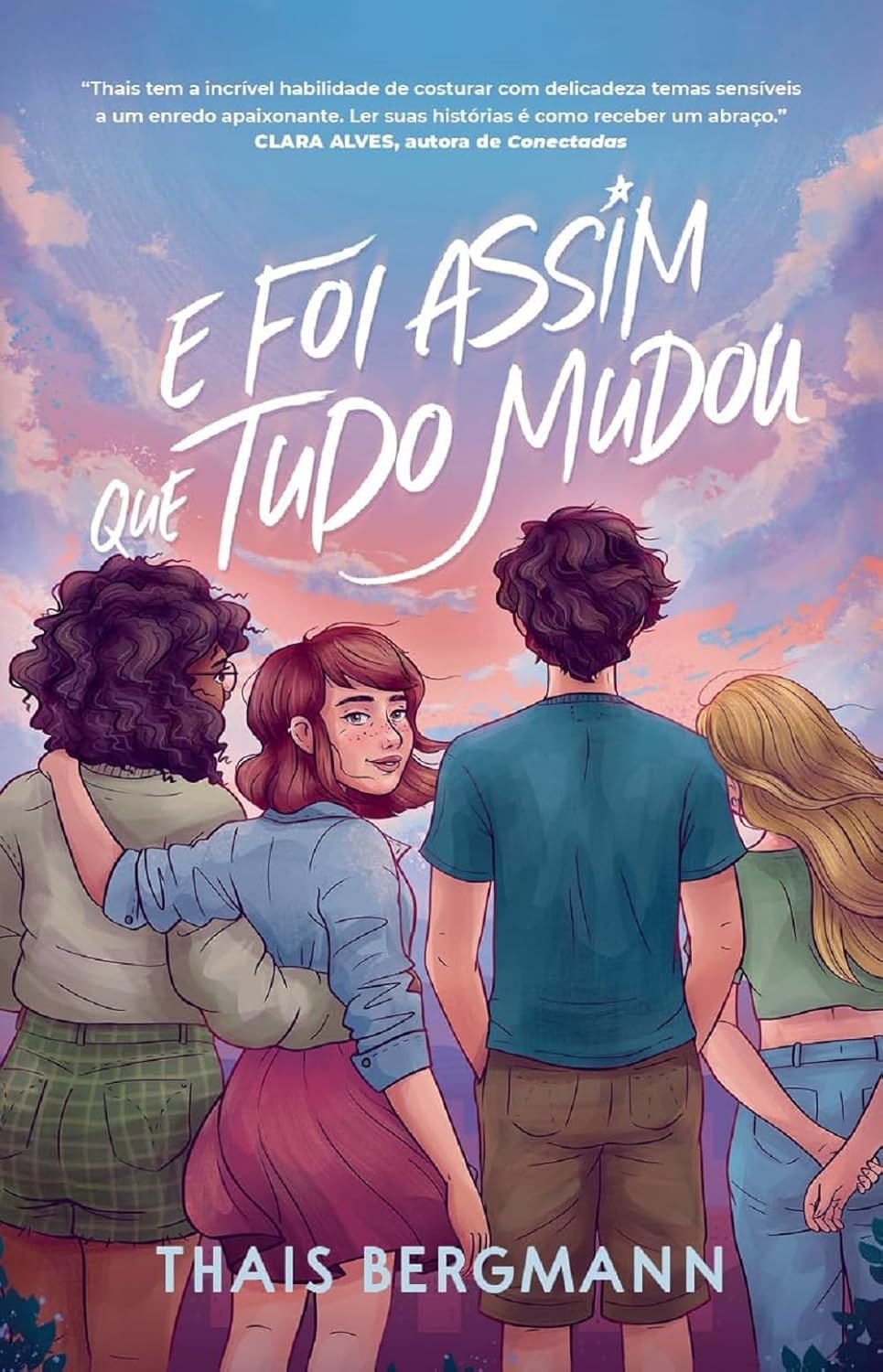Dear reader, if you’ve ever felt intrigued by the big questions in life—like “Who are we?” or “Where did everything come from?”—but felt that diving into philosophy was just too intimidating, I have the perfect recommendation for you! Sophie’s World: A Graphic Novel about the History of Philosophy Vol I: From Socrates to Galileo is a fresh take on Jostein Gaarder’s best-selling book, reimagined by Vincent Zabus and artist Nicoby.
This graphic novel offers a unique and accessible way to explore the world of philosophy through beautiful art and engaging storytelling. It’s not just a book; it’s a visual adventure that lets you dive into the minds of some of the greatest thinkers in history, from Socrates to Galileo, alongside a curious teenage girl named Sophie. Let’s walk through this delightful and thought-provoking journey together.
Note: This review contains some spoilers, so proceed if you don’t mind learning a few details before diving in!
The Story of Sophie’s World: A Graphic Novel
It all starts with Sophie, a young girl who one day receives a mysterious letter in her mailbox. The note contains a simple yet profound question: “Who are you?” Naturally, this sparks her curiosity. Not long after, another letter arrives, asking, “Where does the world come from?” And just like that, dear reader, Sophie finds herself caught in a whirlwind of philosophical inquiry.
Sophie’s journey begins as she starts to exchange letters with an anonymous pen pal who seems to know a lot about philosophy. These letters become the gateway to her learning about the great thinkers of Western philosophy. Through each correspondence, Sophie is pulled deeper into the mysteries of existence, self-identity, and the universe. It’s as if her life transforms into a puzzle, where each philosopher she learns about becomes another piece in the larger picture.
What’s truly magical about this adaptation is how it takes Sophie’s exploration and brings it to life in comic form. The narrative remains faithful to Jostein Gaarder’s original work, but with the addition of vibrant, engaging illustrations, Sophie’s adventures become more immersive. You feel as though you’re right there with her, experiencing each “aha” moment as she does.
Characters in Sophie’s World: A Graphic Novel
Let’s talk about our heroine and the mysterious characters she meets throughout her journey. Sophie Amundsen is an ordinary teenage girl, but her curiosity makes her anything but typical. The way she absorbs the philosophical concepts and relates them to her life is incredibly relatable and charming. As she learns more, she transforms from a girl who’s simply curious to one who’s deeply questioning everything about her existence.
Then, there’s her secretive teacher, who only communicates through letters. He’s the one leading Sophie down the path of philosophy, starting with the teachings of Socrates, Plato, and Aristotle, and moving forward through history. Each letter Sophie receives pulls her further into the history of thought, and with each step, she becomes more involved in trying to understand not only these philosophers but the person behind the letters.
As the story unfolds, Sophie encounters more significant figures, such as Descartes, Spinoza, and Galileo, who challenge her to think about the world from different perspectives. These characters don’t just appear as historical figures; they are woven into Sophie’s life in a way that feels interactive. It’s a brilliant move by Zabus and Nicoby to humanize these great minds, allowing Sophie—and the reader—to engage with their ideas personally.
Table of Philosophers Covered
| Philosopher | Era | Key Idea Explored |
|---|---|---|
| Socrates | Ancient Greece | Self-knowledge and ethical living |
| Plato | Ancient Greece | Theory of forms and allegory of the cave |
| Aristotle | Ancient Greece | Logic, ethics, and natural sciences |
| Descartes | Modern Era | Doubt and the nature of existence |
| Spinoza | Modern Era | Pantheism and the nature of God |
| Galileo | Renaissance | The scientific method and empirical evidence |
The Artistic Style and Its Impact
One of the most captivating aspects of this graphic novel is its art style. Nicoby’s illustrations are whimsical yet insightful, making the experience of learning philosophy feel light and engaging. The comic format allows for a visual representation of complex ideas, which can be so abstract when read in traditional text form. For instance, when Sophie learns about Plato’s allegory of the cave, the way it is illustrated provides an immediate, almost tangible understanding of the concept.
What’s more, the illustrations are playful and filled with subtle humor. They often step out of the traditional comic layout, making the reader feel the expansiveness of Sophie’s mind as she grapples with these enormous questions. It’s almost as if the artwork itself becomes a part of the storytelling, guiding you through Sophie’s journey in a way that words alone cannot achieve.
How the Graphic Novel Reinvents Gaarder’s Classic
For those who have read Jostein Gaarder’s “Sophie’s World,” this adaptation remains true to the essence of the original novel. However, it takes a more interactive and modern approach by presenting the story as a graphic novel. The transition from text to visuals breathes new life into Sophie’s philosophical exploration, making it more accessible, especially for readers who may find traditional philosophy daunting.
Vincent Zabus and Nicoby have cleverly distilled Gaarder’s narrative, ensuring that the major philosophical ideas are retained without overwhelming the reader. The result is a charming, digestible, and visually captivating journey through philosophy. The playful style of the artwork and the pacing of the story make it feel like a light adventure, while still carrying the weight of deep, thought-provoking ideas.
By focusing on the first volume, covering the philosophers from Socrates to Galileo, the authors set up a solid foundation. You get to see how Western philosophy evolved, how each philosopher influenced the next, and how their ideas still resonate in the world today. It’s a perfect entry point for those new to philosophy, providing a bite-sized look at concepts that have shaped human thought for centuries.
Conclusion: Is Sophie’s World Worth Reading?
Absolutely, dear reader! Whether you’ve read the original book or are completely new to Sophie’s philosophical adventures, this graphic novel offers an engaging, visually stunning way to explore the great ideas of Western thought. If you’ve ever been curious about the big questions but felt intimidated by dense texts, this adaptation will be a delightful surprise. You’ll find yourself laughing, pondering, and perhaps even seeing the world through a new lens by the time you turn the last page.
“Sophie’s World: A Graphic Novel” makes philosophy approachable, accessible, and above all, fun. It’s not just for philosophy enthusiasts—anyone who enjoys a good story with a bit of mystery and depth will find something to love. So, if you’re up for a journey of self-discovery and wonder, pick up a copy and let Sophie’s quest inspire you. And, of course, if you’ve already subscribed, leave your opinion in the comments!






